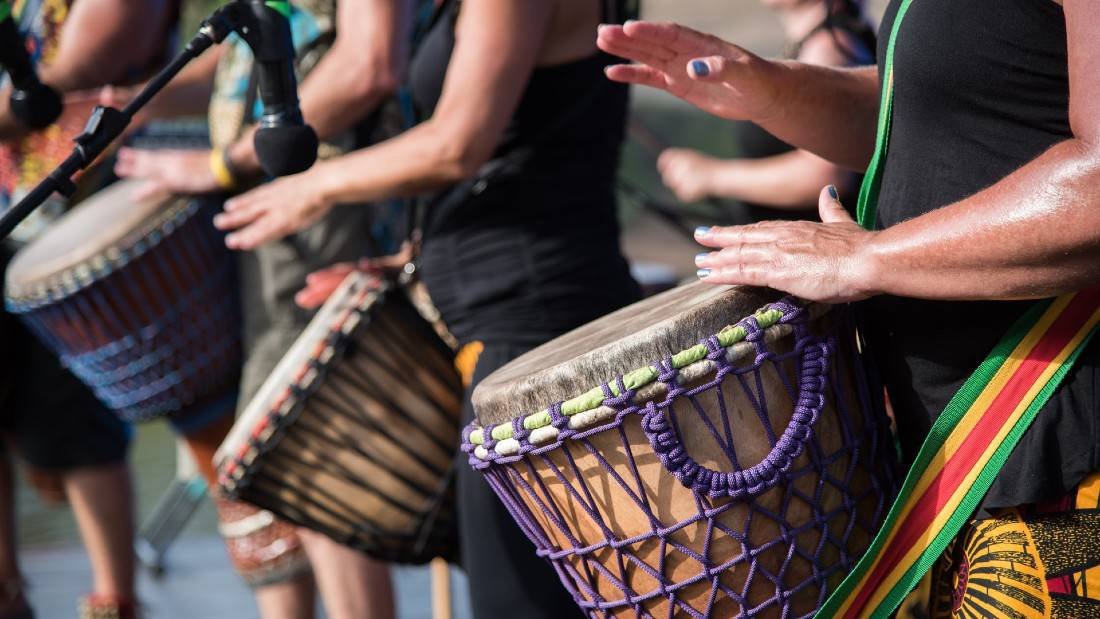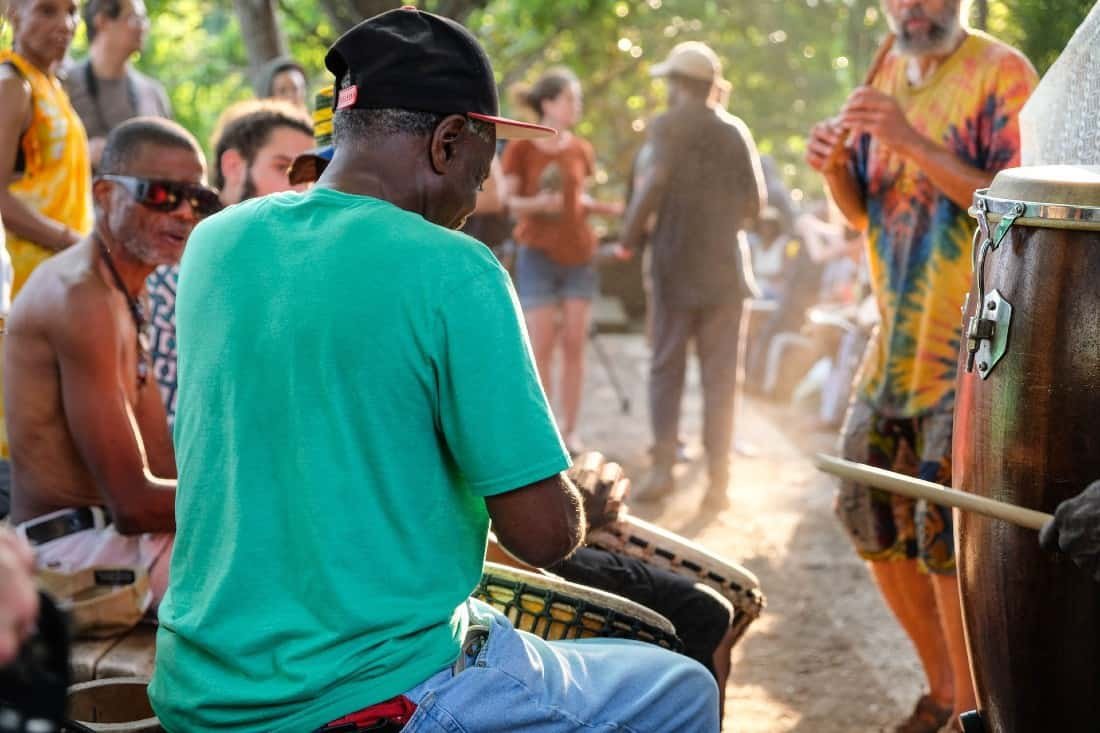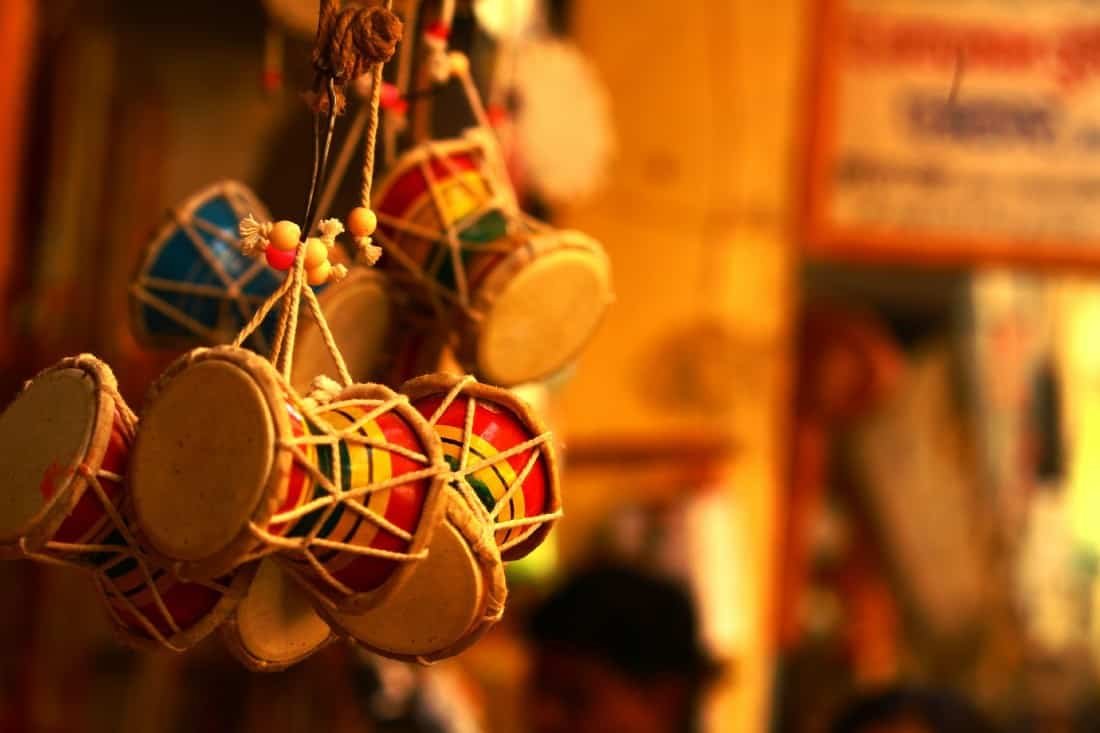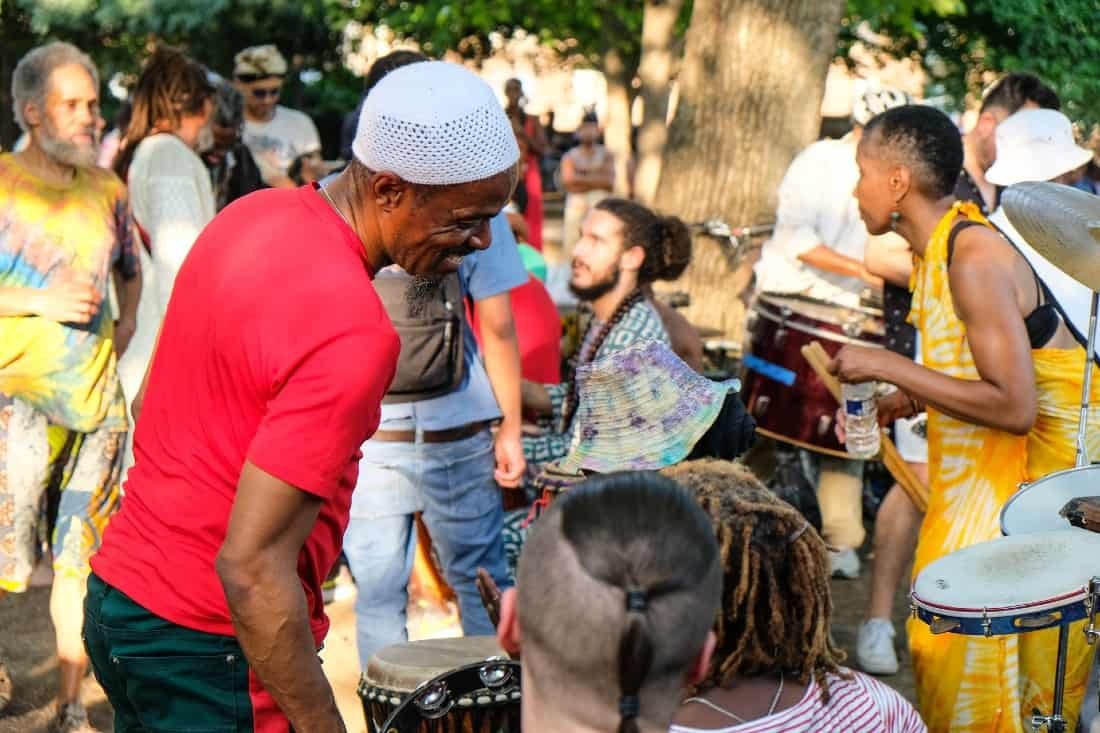What Is a Drum Circle? – General Information

In fact, the answer to the question of what is a drum circle is very simple. A drum circle is a group of people who gather around a large instrument to play music together (usually hand drums). Music is made collectively or individually, depending on the preference of the participants. Usually, the music is improvised and in a circle to facilitate communication and interaction between the players.
Drum circles are a great way to express yourself and connect with others. They are also a great way to have fun while getting in touch with yourself. People of all ages, races, and cultures share the love of music on the same level through drumming.
Drum circles have been around for almost a thousand years. They have been used traditionally to celebrate, pray, or socialize. In drumming circles, the energy is created through music, and energy is shared between the participants. It’s a place to have fun and make new friends. Sometimes there are circles that are more structured, with a leader who plays a particular rhythm and others who follow.
The drum circles are a gathering of individuals with a common interest in drumming. This gathering is facilitated by one or more drums (not necessarily a drum circle) and possibly other percussion instruments. Drum circles are characterized by group participation, a non-competitive and non-judgmental environment.
Drum circles usually happen in parks, open fields, and other outdoor spaces, but they can also happen in community centers, houses, dance halls, and more. They can be big or small, formal or casual, and they can happen all year round.
What do You need for Circle of Drums?
Contents
You don’t need as much as you might think for a drum circle. I suggest the following:

The drum
Depending on the size of the drum circle, you need drums for a drum circle, it may want a small drum or a large drum. I personally recommend a small drum. A small drum is easy to hold while sitting down. It also gives you more room to move your arms as you play.
The small drum also allows other people to sit close to you as you are playing. With a small drum, you can always pick it up and play it if you have to get up for some reason.
A large drum can be played while you are sitting down, but it is awkward to hold and get up and down. If you are going to spend a lot of time sitting on the floor, a small drum may be a better choice for you. If you have a big drum, you can still use it in a circle, but it may be too large to sit close to other people.
The drum sticks
The drum stick is the second part of the drum circle instruments that you must have. It is important to get drum sticks that are easy to hold and that you can get a good rhythm with.
The drum circle leader
The drum circle leader is someone who has been trained to lead a drum circle. Usually, a drum circle leader will bring a small drum and will lead the drum circle. A drum circle leader can play a variety of rhythms on the drum and can talk about the history, story, and spirituality of the drum.
A drum circle leader may also bring a drum circle facilitator. The drum circle facilitator will help you set up the drum circle, answer questions, and help make sure that the drum circle goes smoothly.
The people
You will need at least five or six people to hold a drum circle. If there are not enough people to hold a large circle, you can hold a small circle and have a small drum. A large circle will take up a larger space on the floor and may require more people to hold it.
Optional: a large blanket
A large blanket can be used to cover the space where the drum circle will be. The blanket can also be used as a screen. If you want to hold a drum circle without drums, you can use a blanket as a screen to hide the drum circle leader and drum circle facilitator.

Types of Drum Circles
There are many types of drum circles. Some are organized by local schools, churches, or community centers. Others are formed by drum circle facilitators to play for the enjoyment of the drum circle participants.
The focus of drum circle facilitators varies. There are drum circle facilitators who want to educate the drum circle participants in the art of drumming and percussion, while others want to share their love of music and drumming with others. Still, other drum circle facilitators want a drum circle to be a place to help drum circle participants to feel better and release their emotions.
Regardless of the type of drum circle, a drum circle facilitator’s main focus is to create positive drum circle experiences for everyone involved.
Drum Circles in Schools
Drum Circles in schools are a way to get kids to be active in a fun way. It is a way for kids to make music, learn about creating music, drumming, and the history of music. They can also learn about counting, hand-eye coordination, and group playing.
Drum Circles in Community Organizations
Drum Circles in Community Organizations are often used to help with community building, such as helping people get to know each other and to help with neighborhood building, such as helping neighborhoods get to know each other better.
Drum Circles as Therapeutic and Healing Tools
Drum circles as a therapeutic tool are used in many different places, such as hospitals, community agencies, shelters, and more. They have been used to help people heal from trauma, depression, anxiety, grief, and more.
They have been used to help people return to a state of calm, and to help people with other disorders. They have also been used to help with physical ailments too, such as helping people with arthritis, or other physical ailments that cause pain.
Djembe Drumming Circle
Djembe drumming circles are a great way to learn and play with others. The djembe is the main instrument used in West African drumming, so it’s a great thing to learn if you like being part of a drum circle. If you are interested in these drumming circles, you can find them in a lot of festivals and events. You can be sure that if you learn how to play djembe, you will be loved and respected in a drum circle.
There are many djembe drumming circles that you can join online too. In the online world, you will be able to find a lot of videos, tutorials, and lessons that will teach you how to play djembe. You can also find online drum circles and drummers who can teach you how to play.

Professional Drum Circles
Professional drum circles are typically led by a single facilitator who is responsible for organizing the event, recruiting and training drum circle participants, and leading the actual drum circle. They are often provided as a sideline at other events. Some professional drum circles use an open circle format, while others use a more formal circle format.
Professional drum circles are often done in very public places with many drummers so that the drumming can be done very loud. This often creates a great deal of excitement, but can also be very distracting. This type of drum circle is often more of a social event than a spiritual practice.
Facilitated Drum Circles
In facilitated drum circles, the group is led by one or more facilitators. These facilitators provide guidance, rhythm, and structure to the group. Facilitators can be a group of drummers, a group of non-drummers, or one person.
Unfacilitated Drum Circles
In un-facilitated drum circles, no one person is leading the group. The group is free to create the structure and rhythm of the circle.
Great Way to Spend Time
The drum circle is a kind of music and dance event usually held in a public place, like a park or a community center. People of all ages participate in a drum circle. The main purpose of a drum circle is to inspire music lovers, have fun and make new friends. The drum circle is an easy, fun, and effective way to meet new people and make new friends. Have you ever participated in drum circles? What were your impressions? Please tell us about it in the comments.

